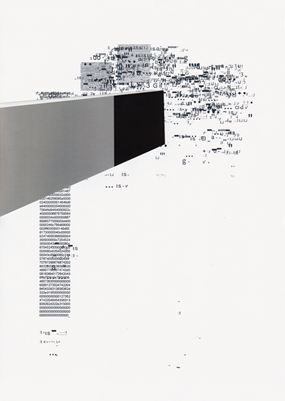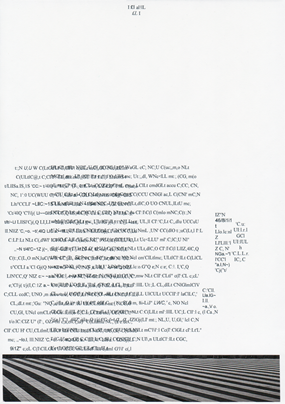For many decades now, theoretical currents from the 60s and 70s, primarily of French origin, have dominated critical art discourse. Recently however, a new speculative movement has been gaining momentum in England, the US, France and the Middle East, which approaches key philosophical questions from another angle. Inaugurating this series is, admittedly, another French theoretician QUENTIN MEILLASSOUX, whose early publications heralded a dramatic rethinking of the nature of objects, the role of science, and the possibility for a philosophical materialism.
Introduction by Armen Avanessian
In the field of art theory itself, this evident uncertainty about how the social status quo might be accurately described has found expression in ever more detailed distinctions between various post/neo/miscellaneous differentiations. At the same time the previous decade has also seen an upsurge of political radicalisation, notably focused on the texts of Jacques Rancière and Alain Badiou – the most obvious symptom being the rise of theoretician Slavoj Žižek to near (retro)pop-star status.
This series, however, seeks to showcase authors who have emerged in recent years. 21st Century Theory focuses on theories from the 21st century. Theories that have not been handed down from the past millennium, but have crystallised within our own somewhat different cultural situation. The very fact that such a project is being undertaken in a bilingual English/German art magazine is undoubtedly a reflection of the prevailing cultural situation. After all, in the past, innovative theories have often been made available to a broader public through the art world (via the magazines, events and catalogue texts that still provide an extra-academic haven for many an advanced theoretician) before eventually becoming academically established in this constantly and ever more rapidly repeating cycle.

Over the last five years or so, a new philosophical movement has been gaining increasing traction under the label of Speculative Realism.1 Taking a distinctly rational approach that does not shy away from metaphysical issues, with an explicit tendency towards realism and materialism in relation to ontologies, the hallmark of these new philosophers is their open embrace of the speculative. Some of the most fascinating thought experiments have been those that have used scientific knowledge as a philosophical resource, as in the case of Quentin Meillassoux. Meillassoux’s thought experiments force us to think of a world before and after humans, in the emphatic sense of a thinking of the absolute. In other words, it is about thinking what is inaccessible to any manifestation to the human: things (archifossiles) before and after any human, animal or plant life; a radical contingency (facticité); the absence of any grounds for reality (irraison); hyper-chaos.
One key concept in particular may highlight the challenge posed to aesthetic considerations if not to aesthetics and its paradigms of experience in general. Meillassoux’s realist and materialist approach is formulated in radical contrast to what he describes as the correlationism of all previous philosophy. In this respect, correlationism is meant in terms of an inability to perceive objects or things independently of a thinking, sentient subject. Thus, Meillassoux’s speculative materialism massively calls into question the dualism of thinking and sensory perception that has informed philosophical and art theoretical ideas since the eighteenth century, when aesthetics first emerged as a discipline. Calling into question the aesthetic paradigm, with its focus on the perception (aisthesis) of objects, in turn raises questions about alternatives to what Jacques Rancière has famously described as the aesthetic regime of art.

These, it should be noted, are not questions posed by Meillassoux himself, who has not yet written extensively on matters of contemporary art. But they are questions that inevitably arise from his speculative approach, and will be addressed, for instance, in our next issue in the form of a round table discussion between art theoreticians, philosophers, and artists. The following essay is intended as an initial introduction to the speculative realm of the 21st century. Quentin Meillassoux’s contribution, published here for the first time, is based on a lecture given at Goldsmith’s College in London, presenting and outlining the basic tenets of his 2006 book Après la finitude: essai sur la nécessité de la contingence.
Translated by Ishbel Flett
1 A transcript of the discussions at the eponymous conference on Speculative Realism at London’s Goldsmiths’ College in April 2007 is presented in the UK journal for philosophical research and development Collapse (Vol III).
In 2012, philosopher and literary theorist ARMEN AVANESSIAN founded a research platform on Speculative Poetics (WWW.SPEKULATIVE-POETIK.DE). He lectures in comparative literature at the Free University Berlin and was Visiting Fellow at Columbia and Yale universities in 2011 and 2012 respectively. Recent publications include Phänomenologie ironischen Geistes (Wilhelm Fink, 2010), Aesthetics and Contemporary Art (Sternberg, 2011, edited together with Luke Skrebowski), and Realismus Jetzt! Spekulative Philosophie und Metaphysik für das 21. Jahrhundert (Merve, 2012). He is the appointed Guest Editor of our new series on 21st Century Theory. He lives in Berlin.
